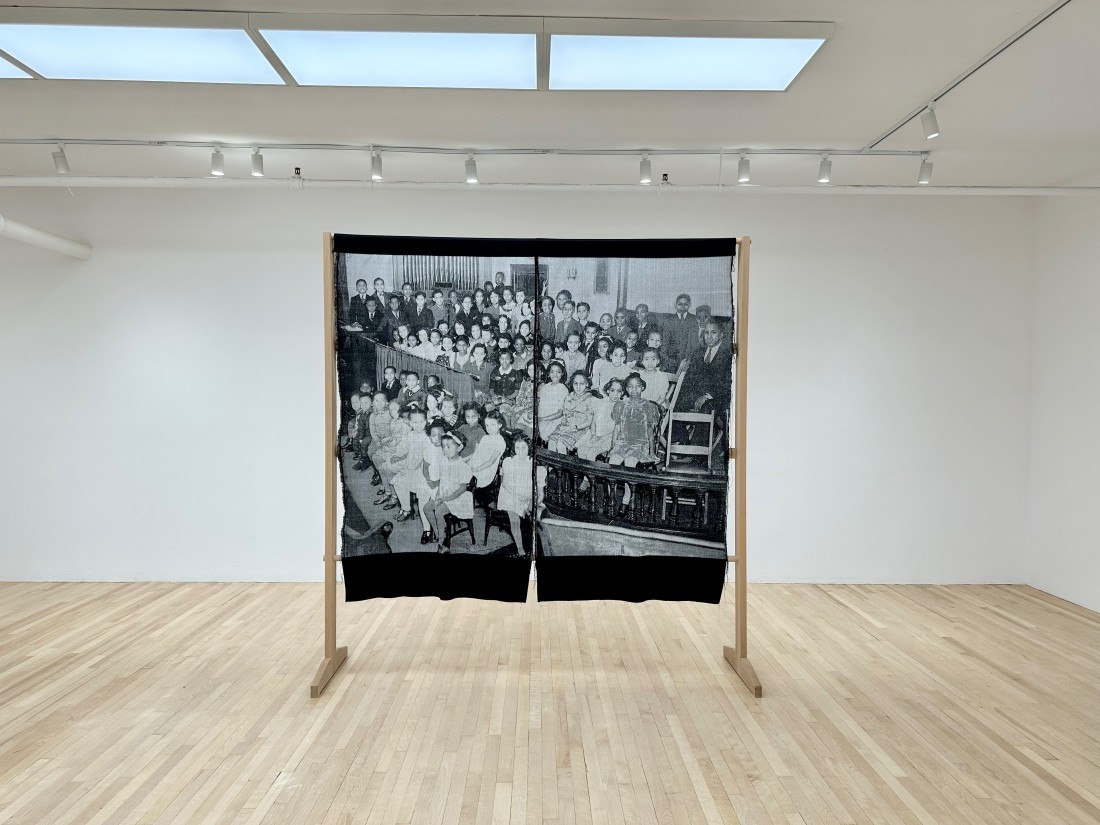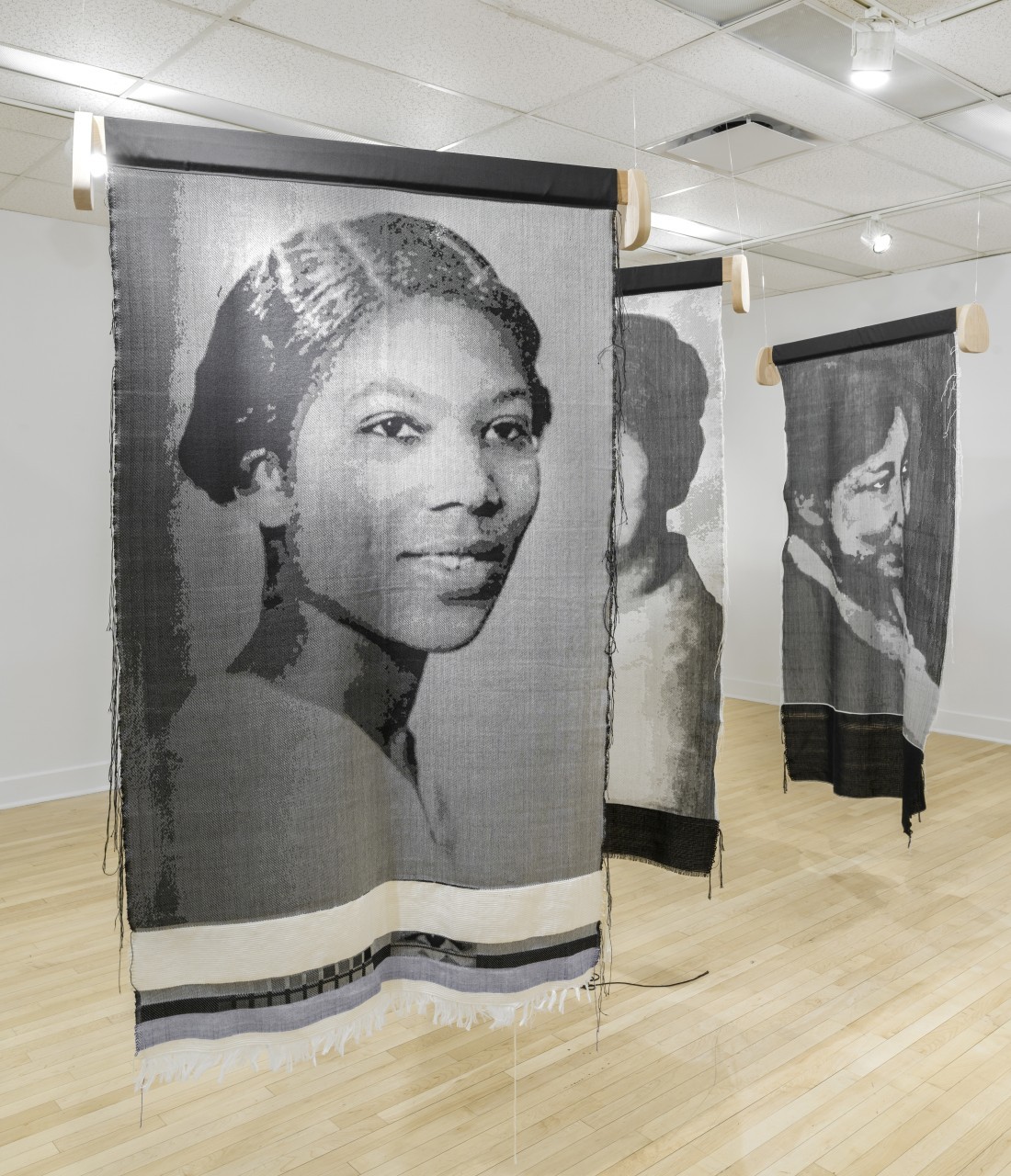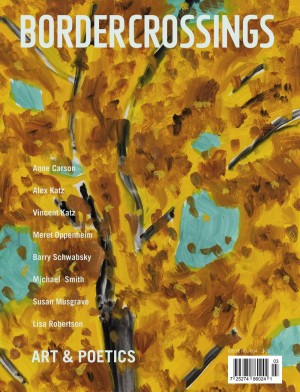Centring the Margins
Michaëlle Sergile, the Montreal-based, Haitian-born, mixed media artist, is living in the past to bring the present alive. Her interests have taken her to the location that is the fullest repository of the past: the archive. An archive is a container of undifferentiated pasts; it is a massive shape waiting to be reduced and then reshaped. Sergile’s focus is on Black women in Montreal from 1902 to 1968, and her intention is to bring them from the margins of historical recognition to the centre. In works like Sunday School, 2021–23, and Coloured Women’s Club, 2023–ongoing, she mines the photographic archive associated with the Union United Church and foregrounds members of the organization who were instrumental in the cultural and educational formation of Montreal’s Black communities.
The medium she has chosen has itself been marginalized. Weaving has been predominantly women’s work, and she sees a link between the medium of weaving and the message of cultural reclamation. She recognized that language offered a clue to her paired interests; identity and weaving used the same lexicon. She said, “In English we say social fabric and in French the phrase is tissu social and the word we use for weaving is tissage. When we talk about the mix of culture in French we say métissage.”

Michaëlle Sergile, Gestures: Body movements in political discourse, (detail), 2020–2023, cotton, alpaca and acrylic tufting, jacquard weave, wooden supports, cathode ray, TV monitors, wall artwork: 190.5 × 134.62 cm, videos: 3 minutes, 31 seconds. Courtesy Galerie Hugues Charbonneau. Photo: Michaëlle Sergile.

Michaëlle Sergile, Sunday School, 2021–2023, jacquard cotton weave, wood, 167.6 × 213.4 cm. Photo courtesy Galerie Hugues Charbonneau.
All her projects engage the past as a way of amplifying the present. The Musée national des beaux-arts du Québec purchased her large work called Black Skin, White Masks, 2017–18, when she was only 25. It is a material transformation that rereads Frantz Fanon’s fierce criticism of Mayotte Capécia’s memoir, je suis Martiniquaise, 1948. Sergile acknowledges Fanon, along with Edward Said, as having been influential in her own development, and she understands that the second chapter in his 1952 book attacking Capécia demonstrates attitudes that are misguided. She takes each of his chapters and realizes them in a woven panel. When you turn the panels around, each horizontal thread is actually a sentence in the book. Her materialization of his text is also a beautiful critique of its deficiencies.
She adds to her list of leaders writers like Maya Angelou and Paul Laurence Dunbar, whose poem “We Wear the Mask” is reiterated in one of her own works. She takes the poem and weaves into its English fabric her own French and Creole language. For her, even language is an archive, a container from which new understandings can be discovered and added. She is constantly looking for connections: Angelou leads her to James Baldwin, whose gestures are as precisely articulate as his diction. In Gestures: Body movements in political discourse, 2020–23, she combines an edited video with a woven portrait. The screen goes black when Baldwin is not present in the tape of the original broadcast from a Dick Cavett show in 1964. It is interesting that Sergile resists the trap of history at the same time that she uses it as a device. She appreciates that archives have gaps and cannot provide all the necessary information: “Every time I open something, a book, a chapter or a text, I would have questions about another person, and it would lead me in another direction. I never really know exactly where I’m going. I don’t really choose. I feel like archives are choosing me more than anything.” To move the story forward she adopts Saidiya Hartman’s notion of “critical fabulation.” It is an aesthetic way of adding compensatory fiction to inadequate fact.

Michaëlle Sergile, installation view, “De nos archives se créeront nos histories,” 2023, Centre Plein Sud, Longueuil. Courtesy Galerie Hugues Charbonneau. Photo: Guy L’Heureux.

Michaëlle Sergile, Ombre portrait 11 (Uncle Jean), 2023, jacquard double cotton weaving, 108 × 66 cm. Courtesy Galerie Hugues Charbonneau. Photo: Michaëlle Sergile.
She has also found a way to personalize history by using members of her own family as subjects. In these images she finds the same dense layering of stories that is buried in Montreal’s history. In Ombre portrait 11 (Uncle Jean), 2023, the features on the face of her uncle become a silhouette. But Sergile views this profile not as an absence of meaning but a proliferation of it. Like Kara Walker, she regards her silhouettes as a surplus. Her uncle’s physiognomy reverses the tabula rasa, the cleanly scraped slate of European knowledge gathering. She is not weaving the “white paper, void of all characters” that John Locke wrote about in his Essay Concerning Human Understanding, 1689, but a black surface, full of characters and incident. It is not waiting for inscription; it is a surface so heavily inscribed that it has to be separated layer by layer. In an ironic twist of history, it can be fully understood only when it is unwoven. ❚

